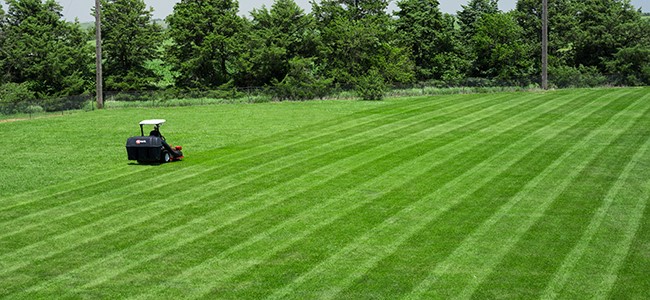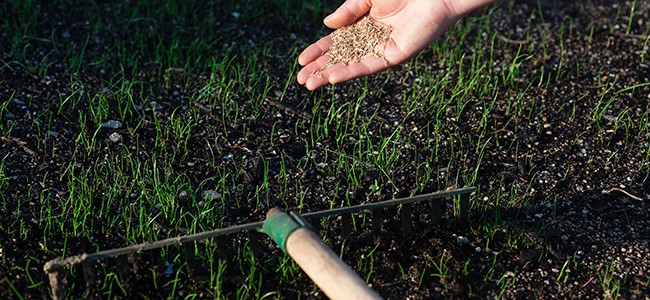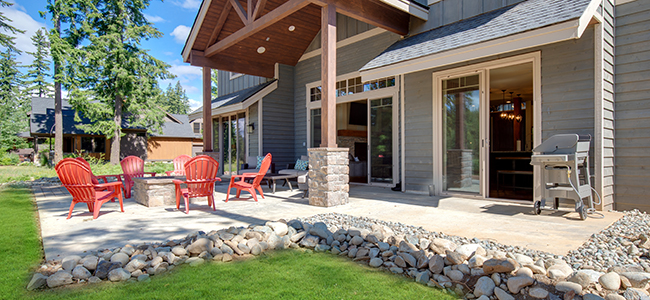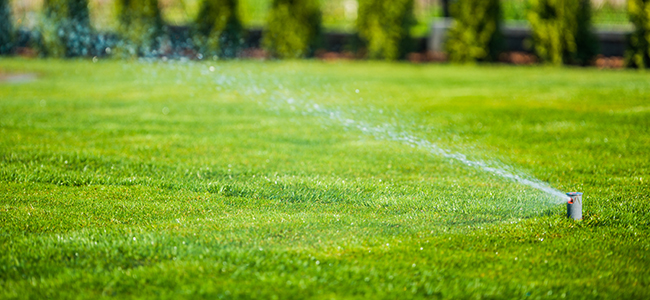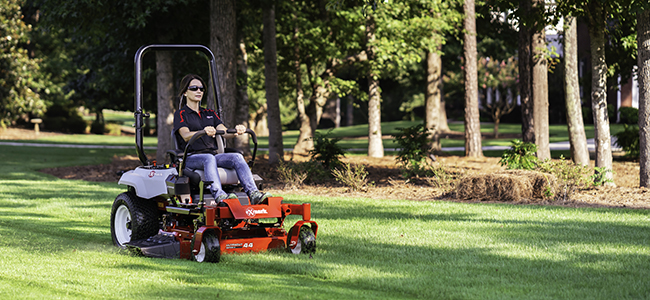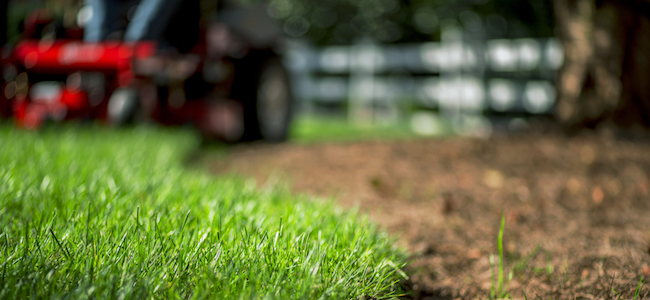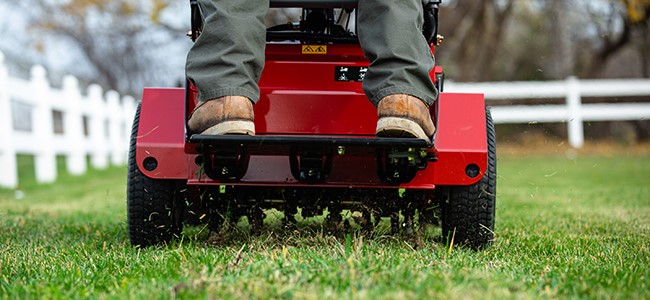
If you’re new to lawncare, you might be wondering, is lawn aeration really necessary? We find that when people ask “is it necessary” about lawn maintenance tasks, they’re really wondering if the benefit will be worth the time and effort it involves. The answer is, of course, it depends upon your lawn.
The goal of aeration is to improve oxygen, nutrient and water uptake by your lawn’s roots. Whether you rent a core aerator or use one of many kinds of tine aerators, all those holes will improve the air flow, lawn drainage and allow more nutrients to reach the roots. So even if your lawn is in good shape, it will be beneficial to aerate in the spring or fall. If you aerate and then fertilize, it will make fertilizing more effective.
Lawn aeration is really necessary when nutrients and oxygen can’t get to the roots. Soil compaction can prevent air flow and proper drainage. Compaction can be due to heavy foot traffic, or to machine traffic, such as mowers or construction equipment. Soil composition is also a factor; if you live in an area with heavy or high clay content soil, your lawn will compact more easily than light or sandy soil.
Sure signs of compaction are that it’s hard to dig, slow drainage, even after light rain, in low areas, and high run off. Stunted plant growth, shallow tree roots, and bare areas can also signal compaction. Lawn aeration can help your soil recover from foot or machine traffic. For heavy or clay soils, you may also want to work organic material into the ground to help change soil composition.
Aerating can also be beneficial if you have a deep thatch layer. Thatch is organic material, like grass clippings and leaf mulch, that sits on top of the soil. A small layer of thatch is beneficial, but more than half an inch will prevent air and nutrients from reaching the roots. If your grass feels springy or spongy underfoot, your lawn probably has too thick a thatch layer. Aeration will speed up decomposition of thatch by increasing bioactivity. If you’re aerating due to thatch, you should use an aerator that pulls plugs of at least 1” of soil.

